 Last week I went to an exhibition, my friend Sue was, amongst a lot of other artists, exhibiting her ‘Cocoon’ summary-cocoon.pdf which I used as part of assignment three. It was an interesting space of artists and craft workers, mainly textile, though some 3D work and paintings were amongst them. I was reminded of this when reading the series of comments and statements on the WeAreOCA blog following the entry on Kessels work that I saw in Arles in July. All this came to mind as I start to investigate the fourth module of this course – Advertising.
Last week I went to an exhibition, my friend Sue was, amongst a lot of other artists, exhibiting her ‘Cocoon’ summary-cocoon.pdf which I used as part of assignment three. It was an interesting space of artists and craft workers, mainly textile, though some 3D work and paintings were amongst them. I was reminded of this when reading the series of comments and statements on the WeAreOCA blog following the entry on Kessels work that I saw in Arles in July. All this came to mind as I start to investigate the fourth module of this course – Advertising.
The work in Aynho was often quite beautiful, certainly a lot of very pretty work and some work that defied the notion of commerce by being both interesting and not for sale. Sue’s ‘Cocoon’ wasn’t for sale, it is still a work in progress and I have still haven’t plucked up courage to put a secret inside. I went to the show on preview, not just for the drinks and nibbles, but, hopefully, to engage with a few of the exhibitors, to explore what their work was about. I was reminded of this event when I started to read the comments on the WeAreOCA blog about the way some ‘artists’ approach their work, how their work is informed and why it is they do the work they do.
This module is called Advertising, there is some research about advertising, somewhat mixed up with the notion of marketing I feel, but nevertheless it is how the ‘artist’ might generate work that engages with the purposes of capitalism to encourage consumerism and ‘buy stuff’, or ‘invest in stuff’ or be complicitly engaged in the process. One of the exercises is to attempt to place some images with a photo agency Alamy, an interestingly timed venture as Getty has decided to place a lot of it’s images ‘out there’ for free an action which, I suspect, will further alter the paradigm by which professional photographers will be able to engage commercially. I have decided not to pursue the Alamy route and won’t attempt to get any images ‘on-line’ because, despite having not read Alamy’s terms and conditions, I find them unacceptable. I have no reason to suspect that Alamy is a disreputable organization and it might well be an exemplar in its field for all I know; I wish them well.
It is though this notion of self promotion that I found interesting, clearly an exhibition is a self-promoting exercise; the poster for the show that Sue participated in suggests that whilst entrance is free there are items for sale including refreshments and proceeds will go to Creative Activities for Elderly People, all in a good cause then and noting that not all the work will be for sale, one can denote (there is also a section in this module on Semiotics, which seems to ignore completely the work of Peirce and others and focuses solely on Barthes and Saussure, maybe Barthes because of the work done in deconstructing advertisements….) from the poster/advertisement therefore, that there will be work at the exhibition that is not for sale
One of the main threads in the exhibition I found, was how attractive a lot of the work was, how immediately compelling some of it was. The show had quite a few textile workers who used some gorgeous colours, bringing a lustrous rich quality that drew me to their work, golds, scarlets, sapphire blues, emerald greens. The painters had what Grayson Perry described as – and I paraphrase – the societal norm of acceptable painting; landscapes with some people in the foreground and a lot of blue. Prices ranged quite a lot, from a few pounds to a few hundred pounds for different artists – some of whom have an established clientele and are starting to be collected. I suspect the timing of the show isn’t a completely random choice either, with about eight shopping weeks left for Christmas. I was glad to see that Sue had included some of my most recent photographs of her and her work in a book she had had published recently (not for sale either) to accompany her Cocoon.
A tutor sometime ago informed me that the approach of a ‘jobbing professional’ photographer was to ‘get deep quick, get the work done and get out’ (again, I paraphrase). I can fully comprehend that notion, it seems perfectly reasonable for a student of photography who needs to get the work done, submit it, get paid (marked) and move to the next job. I can also see that doing such would be a great ‘advert’ for the skills of that photographer, that they would more likely get more work from that client again for doing such an exemplary job. We, as students on this course, are often told, ‘read the brief, don’t go beyond it and submit it on time’, my previous Managing Director also echoed that comment by saying to me ‘never do a customer a favour’. There are other tutors who offer a different mantra, about exploring the idea from a personal perspective and developing a reasoned response to it – I wonder though how much they sell of their work!
I am reminded again when reading some of the comments on the WeAreOCA blog entry regarding the need to ‘put work out there’. Kessels’ work suggested to me various notions; yes the vacuity of the present day digital world that allows volumes of images to be ‘uploaded’ almost as soon as they are created, perhaps the availability of that capability provides the impetus to do it? And, to one of the commentators on the blog who has suggested, it may have to something to do with ego perhaps, but it might be something about value (or the valueless notion of the image, but I’ll come back to that later). My own personal perspective on this work to an extent agrees with the egotistical relationship mentioned, but I also recognise other perspectives; that of a silent witness perhaps, of a search for a voice in an increasingly mediated world, or that of celebration of love or death, or that of companionship – whether there or searched for – again in a world mediated by social media where discourse is by an avatar and moniker that translates identity to a virtual plane of obscurity and anonymity which often meets with a desire to transcend them to a desired personality from another place, divorced from the responsibility of reality.
That individuals flood the world with images suggests, amongst other reasons, a cry in the wilderness more than a cry of ‘look at me’; which brings me back to marketing and it’s associative instrument the advertisement. Increasingly, and by dint of it’s own premise, marketing will continue to strive to marginalize, segmenting the audience into smaller and smaller pieces, increasing the size of it’s apparent target to better position it within the frame of its desiredness and therefore to better mirror that allure and improve its chances of success. The Ford motor company first offered the Model T to the world (North America, which to them at the time was about the same thing) with the saying ‘that you could have any colour you wanted as long as it was black’. Now the posit of the ‘Mad Men’ is to be able to refine, by segmentation, the infinite colour proposition to better enable both the admen’s product and consumer’s inevitable resignation of triumph in purchase.
Kessel’s images come with certain attributes, there are those who are seemingly fixated by volume – there are xxx thousands of images in the building, there were xxx millions of images uploaded in a certain year, Fred Ritchen seems permanently in a state of awe with these numbers in both his books ‘After Photography’ and ‘Bending the Frame” (not wishing to disparage either of these otherwise very stimulating tomes). The record numbers though will be beaten tomorrow; the question as to why will unlikely be answered tomorrow, because there are likely to be too many questions being asked of them. The ‘adman’s nightmare’.
A basket of pasta, a tin of sauce, some tomatoes and other superfluous vegetables and a limited colour palette, suggests, amongst other things, that it is food and it is going to be eaten. Its ‘Italianicity’ is but a part of it’s value to the adman whose desire to entice you to buy would have a lesser value today, our (the market’s) denotating antennae perhaps haven’t changed very much in the last few decades – a post post modernist assumption perhaps? But pasta is no longer a marketing segment anymore, now the need might be for which type of wheat, which side of the hill it was grown, we (the consumer) would probably be interested in the use of fertilizer, of systemic weed-killing (or lack of), of distance travelled to the place of purchase (though not of the distance travelled to purchase by the consumer), sustainability et al, et al. Narrowing the channel of irrigation and introducing those studium opportunities, by an increasingly self proclaimed sophisticated Madman team, leads still to a still simple image though within a more defined market demographic.
That advertising works isn’t in dispute, that the advertisers continue to strive to find better and more efficient ways to ‘drive awareness’ will come as a surprise to no-one, that it has – in the main – moved on from the projections of Sabrina, except as a device of irony, nostalgia or distancing, should also be of no surprise. And so my concern, perhaps my overriding concern at this juncture, in this course, is whether I am being encouraged to consider that to sell my work I need to develop a conversation with an audience for that purpose? Whether I need to understand how my market works, to consider how to engage with it? Refine my approach to it in order to develop that ‘market’ for it? Although I actually think at this stage that the notion that I need to sell my work is being seen as a validation of the course’s effectiveness, rather than whatever sense of self awareness I might have been able to explore and comprehend. If I wanted to construct a ‘landscape with a few animals or people in the foreground; mainly in blue’, which is, according to some research quoted by Grayson Perry in his recent Reith lecture, the most popular art product, then what would I need to attend this course for? I could as a commentator on the Kessel’s blog post simply converse with my customer base and make stuff that appeals to them. To make beautiful work in gold and ruby red (and a lot of sapphire blue) without the least notion of it’s relevance to me other than my wallet. Roll up, roll up!
This image found on the pile in Arles, presumably by the staff constructing Kessel’s installation holds more fascination to me than the pretty photographs of North America above. I have no notion of the context or narrative that surrounds this found image, but I know all about those beautiful black and white prints rendered so expertly in a continuous tone which, when I used to sell stuff, sold quite well – there are plenty of them on walls in this country and others.

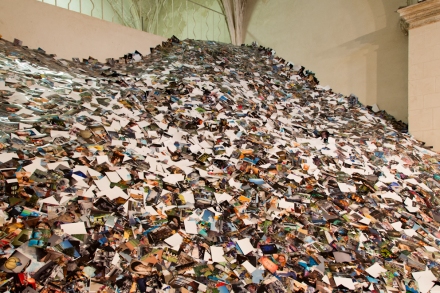
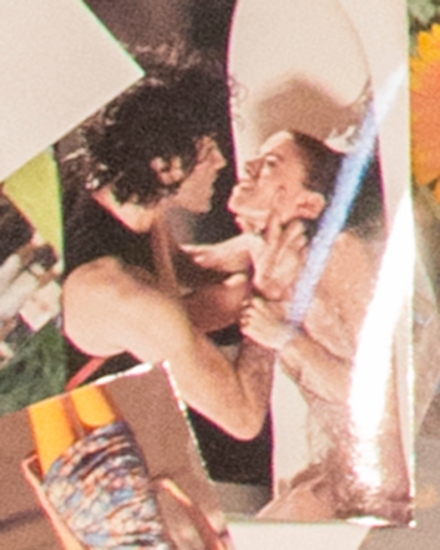
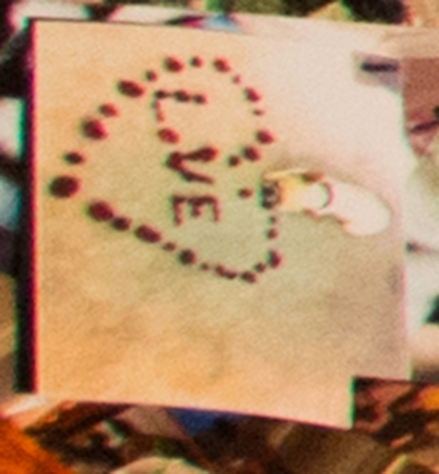
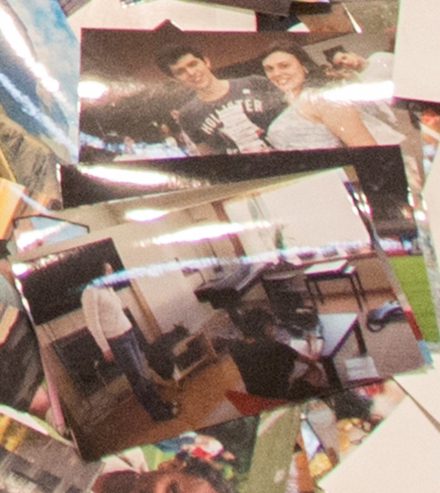
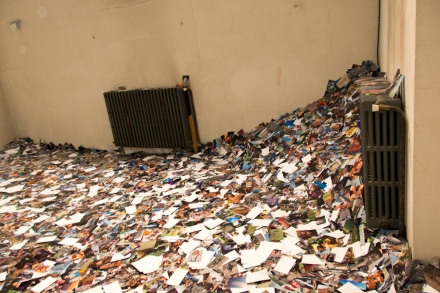
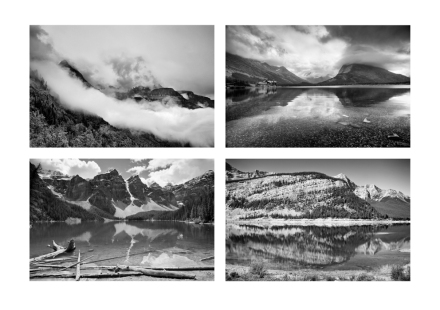
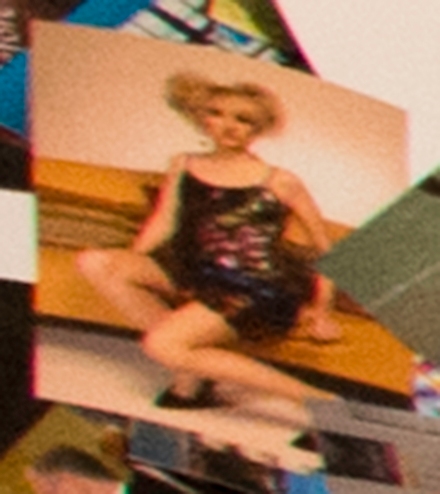
Hard to know how to respond to this post John….you seem a little (or in fact a lot) put out by the way the course seem to incite you towards the commoditisation of your work.
I wonder if the proliferation of images we have today and ‘putting one’s work out’ are the same thing. To some extent I think people put images out because they can. In the same way as people put voice and text out via mobile telephony – because they can. Is it because they want to promote their work, or is it because they want to communicate? I think in most cases it is the latter.
In the case of an artist with something to say, the something does not get said unless other people see the art. This is the most important reason why we as artists/photographers need to get our work out there…. We need to get the questions our work is posing out there…
There can be no doubt in my mind that the purpose of my study is to develop my comprehension of the world that I live in, not to earn money from it. If I graduate it will not affect my employment opportunities one iota – let that be said.
I do think that individuals put their work ‘out there’ for many reasons, I have no work on Flicker and sometimes put work up in the hope of some engagement – which it does on occasion. I exhibit regularly and the thing I gain is more discussions with other artists in my area. I suspect most put pictures out there for very little reason, other than, as you say – they can! So why not?
On a p&l slide I am deeply in the red :O) and the other side I am in the black. And I do think I have things to say, even if it will eventually be to myself….
I did struggle with posting the blog piece – but it’s ‘out there’ now, though I suspect it’ll only be read by a very few – so I’ve no real concerns about it!
You should have no concerns about the post. It simply sets out how you feel. My view for what its worth is that you do have and will continue to have things to say which are worth listening to and which may result in changes for the good…I’m thinking here of the way you helped the folk in the Echoes Group…Great to have some honesty in a blog post….
Continuing with this thought re ‘putting one’s work out”. When I first got my DSLR I joined Flickr. I enjoyed photography so much and it was good to see my images (what I thought were the best of course) on the web and for people to actually comment on them usually in a thoughtful and encouraging way (I never did get the bells & whistles awards). It was even better when a local Surrey newspaper asked me a few times if I would send them images for inclusion in a photo feature.
All that has changed now since I started to study photography seriously. I rarely put images on Flickr now because I’m self-critical and also keep asking myself why I’m doing it. People who used to comment rarely do so now – I guess they don’t quite understand the photographs I’m posting. I have to confess I don’t enjoy taking photographs as much nowadays and I certainly don’t think I have sufficient skill yet to sell my photographs. Where does that leave me? What kind of venue/event is suitable for me to “sell myself’.
I guess I’m off the point really but that’s what came into my mind on reading your post John.
I was at the Pitt Rivers Museum today (they had a launch of some new work from the community) and they had some of my work (with the Echoes Group) on display as part of that overall piece of work; that my work was used was less enjoyable than knowing it was used within a collective supporting people who are being left with fewer and fewer resources by the society we live in. So if your work is used by anyone you should be proud and pleased. I tend to agree with Peter Haveland that a lot of the Flicker images are about vanity – I’m not talking about the more serious students, but I noticed one of the OCA students had posted an image the other day to the site, but also posted it to over 30 other sites at the same time! Why did he limit himself to just 30, why not 130 sites, surely he would have got lots more ‘likes’ and flashing symbology? Maybe you think you don’t like taking pictures because you are more aware of what it is that you are making when you press the shutter? Perhaps that is a sign of artistic development?
Oh, and if you are getting regular press work, maybe I can be your assistant when I graduate:)
I too agree with Peter’s analysis about vanity. People are anxious to get recognition with lots of comments and so on….it seems to me that all social networking sites have this side to them. But they also enable us to share work and gain constructive feedback. I sometimes wish people on the OCA site were a little more critical….
I’m not sure what you mean Catherine when you say that you don’t have enough skill to sell your photographs. Do you mean photographic skills or selling skills?
John, I read this when it first appeared yesterday & felt a desire to respond but was unsure how. I’m glad Keith & Catherine were there to get back to you first!
Reading it again today, I think the paragraph that ‘troubles’ me most is the one just before the first photo of the Kessels’ work. I’m not familiar with Gesture & Meaning, specifically (though I did see an early draft), so it may be something to do with the way that course is written, but I don’t recognise the version of OCA tutoring that you refer to. It is certainly not typical of any advice that I have even been given. Crucially, the advice from those involved in assessment is usually more along the lines that this is a personal journey.
Of course the new Level Three modules include one entitled ‘Sustaining Your Practice’, with the stated ‘ultimate aim’ of ensuring that “the portfolio of work that you build in Major Project: Body of Work reaches a wider audience”. So far as I can see, though, there is no mention of selling the work. It is about it reaching an audience and will, I’m sure, include sufficient flexibility to work in individual circumstances (obviously subject to the usual academic rigour).
You come to your studies with your own set of previous experiences and your own objectives (as we all do, naturally). You probably know more about commercial marketing than those who wrote the course or are doing the tutoring (many won’t) and it sounds as though you have already satisfied any personal desire to sell your photographic work (though most won’t). But you most certainly have something to say, something that is well worth hearing/seeing, and something that should reach its wider audience. I hope you can find a quick way through this immediate challenge – or simply walk past it and carry on.
(Not entirely sure whether what I’ve said gets anywhere near the concerns you’re expressing, but it is well meant!)
Stan, thanks for these careful comments, and I take them as I know they were meant. As for something to say that might be worth hearing I’m still trying to come to terms with exactly what that is, or might be. I am hoping, perhaps above hope, that it might become clearer before I start on level three – though the notion of professional practice isn’t one that I looking forward to at this point, so I’m leaving it parked there until and unless I have to face up to it. And thanks for the insight, it is good to have that perspective.
Hello John
Some thoughts:
Like others before I tend to agree on comments about social media, the flood of images, and the varying reasons for placing images online. I guess I’m not keen on the term ‘putting it out there’ because it has connotations of sexuality and other things. But, with young adult stepchildren, I have begun to understand this new way of life—the living and sharing vicariously online. That’s not to say that I agree with it; but they live in a different virtual reality. Life is lived and shared via social media sites—including photographs. Sometimes, or quite often, it’s vanity in the sense of ‘look at me and what I have…’; but other times it’s just genuine sharing—not the way that either you or me feel comfortable with—but it’s something that we have to live with. To say they have ‘no shame’ is not what I am trying to say here, but they have a limited understanding of what should be kept private. Just recently my mother-in-law passed, within an hour, the step-daughter had posted—via her mobile—a recent image and a eulogy—before we could notify family. This was not seen as wrong by her, she wanted to share her pain in the virtual world as much as she is likely to share her happiness, her travels, her daily routine etc. Yes, I shudder—but that’s life. You mention the ‘valueless’ of the images posted on Flickr—for us as outsiders, maybe they are—for the person who shared them, in this so-public space—maybe they aren’t. They could be tender images of important moments—shared electronically because distance and present-day appetite for the immediate, demands it.
What I am trying to get to—from that very long digression—is to separate the volume of images [Kessels] and the commodification of the image, advertising and the photographer. I don’t see the connection between social media ‘sharing’ and the exploitation of the consumer via enticing images to make a purchase of a product not needed.
Regarding G&M and the section on advertising; my feeling—from a very quick read—is that the student is being directed to an understanding of how the industry operates. Whether the student consequently opts to operate within that industry or not is their choice—but armed with the knowledge they are able to make a more informed decision.
I was interested by the way you used terms such as ‘pretty’ and ‘beautiful’ to describe some of the work—these were positive comments—and yet I have heard you use the same terms in a disparaging manner when discussing your landscape work. My question is ‘when is it acceptable to describe art as being pretty etc; and when is it not?’ Always people will seek out that art, which although superficial—in that it can only be accepted at face-value—but which is aesthetically pleasing, to have in their homes. It is an escape, a place of refuge and escape—we cannot condemn that choice. There is also an implied fact in the beginning that the work created that is not for sale, somehow has a greater value—not a resale value as such—but an intrinsic value. Maybe I am misunderstanding what you have said there? From your statement “when I used to sell stuff” suggests that you no longer sell images; and look disparagingly at the photographer who opts to do this? We can call to mind a number of photographers—Avedon, Penn, Sherman, Arbus and others—who have straddled the world of art and commerce—making images for sale to keep the wolf from the door, whilst also concentrating on their ‘art’ photography. Does the fact that they dallied in commerce and advertising reduce the worth of their other work?
This was the only bit I really battled with “because, despite having not read Alamy’s terms and conditions, I find them unacceptable. I have no reason to suspect that Alamy is a disreputable organization and it might well be an exemplar in its field for all I know; I wish them well.”. It just did not make sense—you gave no justification for your comment that you find then unacceptable. If it is because you have no desire to sell your images in a commercial environment, feel your argument would have been better if you had stated that. It was this ‘out-of-hand’ dismissal, which seemed so out of character for you.
Oops—been stuck inside for too long—sorry for the rant!
Thanks for these thoughts Vicki, certainly some things to think about!….
“My own personal perspective on this work to an extent agrees with the egotistical relationship mentioned, but I also recognise other perspectives; that of a silent witness perhaps, of a search for a voice in an increasingly mediated world, or that of celebration of love or death, or that of companionship …..”. is what I said, I hope this meant that I appreciate there many reasons why people post images? And as for how ‘..the industry works..’ as I say it’s NOT a desire to become part of an industry – I’ve left all of that behind – that I’ve started (again) on this pathway, it is about enlightenment. And I also apologise if you think I disparage photographers who sell their work – I don’t (those first three in the list never had much time with the wolf at the door, Sherman being one of the richest artists in the world (I think the richest female) – I wish them all the luck in the world, as I do Alamy; which to clarify, is about the notion that I am working this course as a means to develop a career in commercial photography – nothing could be further from the truth. I continue to sell my photograph and my photography; I see it as a completely separate entity from developing as an artist. That people pay me for doing so is fine, my terms are take my offer or leave it, or I may decide to offer my services for free – as I continue to do for Artscape with the Echoes Group.
Now for the thoughts on prettiness. Most, if not all of the work I’ve sold has ended up on walls, some of the commercial work ends up on web-sites and brochures, but mainly on walls. It’s called ‘wall-art’, it has no value other than an apparent atheistic beauty, gorgeous tones and lovely views. I still find them valueless as I have done for some time. I am trying to find a voice for my own personal investigations into ‘stuff’ that concerns me, that moves me and that I feel I need to address in my life – why would I want to make them pretty or sell them? I don’t condem anyone who wants to buy my wall-art, nor do I those that have other aesthetically pleasing images, sculptures to look at – our walls are full of pretty pictures, flowers, children, grandchildren, Indian cellars, landscapes, etc. I try not to confuse the two.